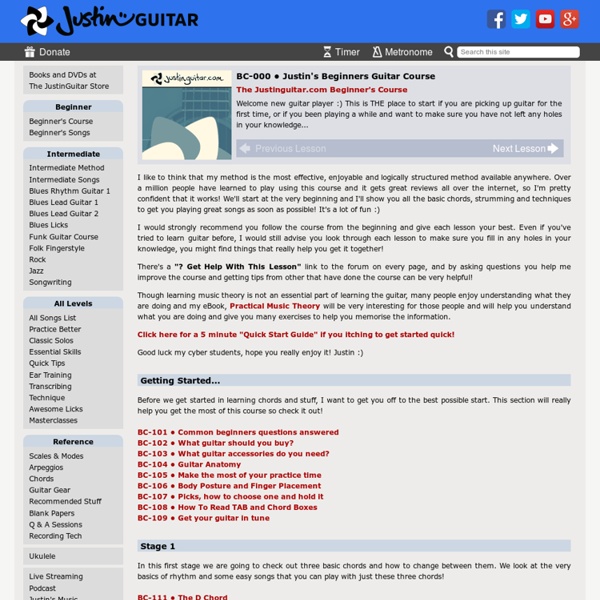Justin's Beginners Guitar Course

Fantastic Plastic - Amazing Aircraft and Spacecraft Model Kits
Having trouble with major/minor scale patterns? Check out this pic I made. Only ONE pattern to memorize! : guitarlessons
21 Cool 3 Notes-Per-String Exercises to Rock On!
Photo by Jsome1 Playing 3 notes per string exercises is something I do on a regular basis. I use them to warm up, to become a faster guitar player and to spice up my improvisation. 3 notes per string licks and scales are generally used for speed picking. Whenever you hear a guitar player playing these really fast terrifying licks, it’s probably a 3 notes per string lick. Paul Gilbert of Mr.Big is one of many great experts in this field. If you practice these exercises properly and often enough you will increase your speed. The 3 notes per string exercises are played using the alternate picking technique. Once you get the hang of it, it can become quite addictive, but be careful though. The one and only reason why these monster guitar players become so incredibly fast is that they practice long hours for days, weeks, months and years.
FUCKING HOMEPAGE
Free Guitar Lessons - Dolphinstreet
Get Free Electronic Parts for your Projects
Don’t you hate it when you’re working on your next project and realize you’re short a resistor or capacitor? You have two choices: Buy online, pay for shipping, and wait a week or go to your local Radio Shack and pay ridiculous prices to acquire what you need. Forget that! Go to these companies, simply request free samples, and they’ll send you free parts – Sometimes even overnight. Email us and let us know about your experiences as you request samples. Push Buttons & Switches: General Components: Free LED Samples: Free IC and Microcontroller Samples: Project Boxes/Enclosures: Free Semiconductor Samples: Need more?
Music Discipline - Lead Guitar General info
Here you can find a guitar tuner and some general info on practicing the guitar! Are you in tune? Click on the pegs to hear the strings in tune and take a moment to tune your guitar. Playing with a pick The exercises for the guitar on this website were written for players with picks. Hold the pick with two fingers (your thumb and forefinger) as shown in the figure: The up and down picking motion should always come from the wrist and not from the elbow! As for the thickness of the pick - try different sizes and see which is more comfortable. The guitar in general Take a moment and familiarize yourself with the parts of the guitar so that we are on the same page with the terminology throughout the exercises. Playing with an amp For most of these exercises it is not necesary to play them using any kind of amplification, you can even play them on an unplugged guitar. Often times it's good practice to record yourself playing so that you can listen and objectively hear your strong and weak points.
The Guitar Master :: Interactive Circle of Fifths ::
1.) Click on a key name (C,D, Ab, G# etc…) to spin the circle until that key is at the top. The name in the red oval should always be the key you are interested in so make sure it is at the top. You are now working in that MAJOR key. 2.) - Names to the right of the dividing line are the names of the notes in this major scale. - Names to the right of the dividing line including the chord types (major minor or diminished) are chords in this major key. - The mode names (lydian, locrian etc…) are positioned near names of major scales required to achieve that mode for the key in question. - The name at 3 ‘o’ clock is the relative minor (key, chord or scale) to the major key in question. Example1 Let’s say we want to know how to play an E phrygian scale. 1.) Example2 Let’s say we want to know what the notes are in a G# major (or F minor) scale. 1.) Example3 Let’s say we want to find out what chords are in the key of Gb. 1.) I hope you find this useful. The Guitar Master share
Français interactif-free french learning(full course)
GuitarPro tabs sharing website
Related:
Related:



